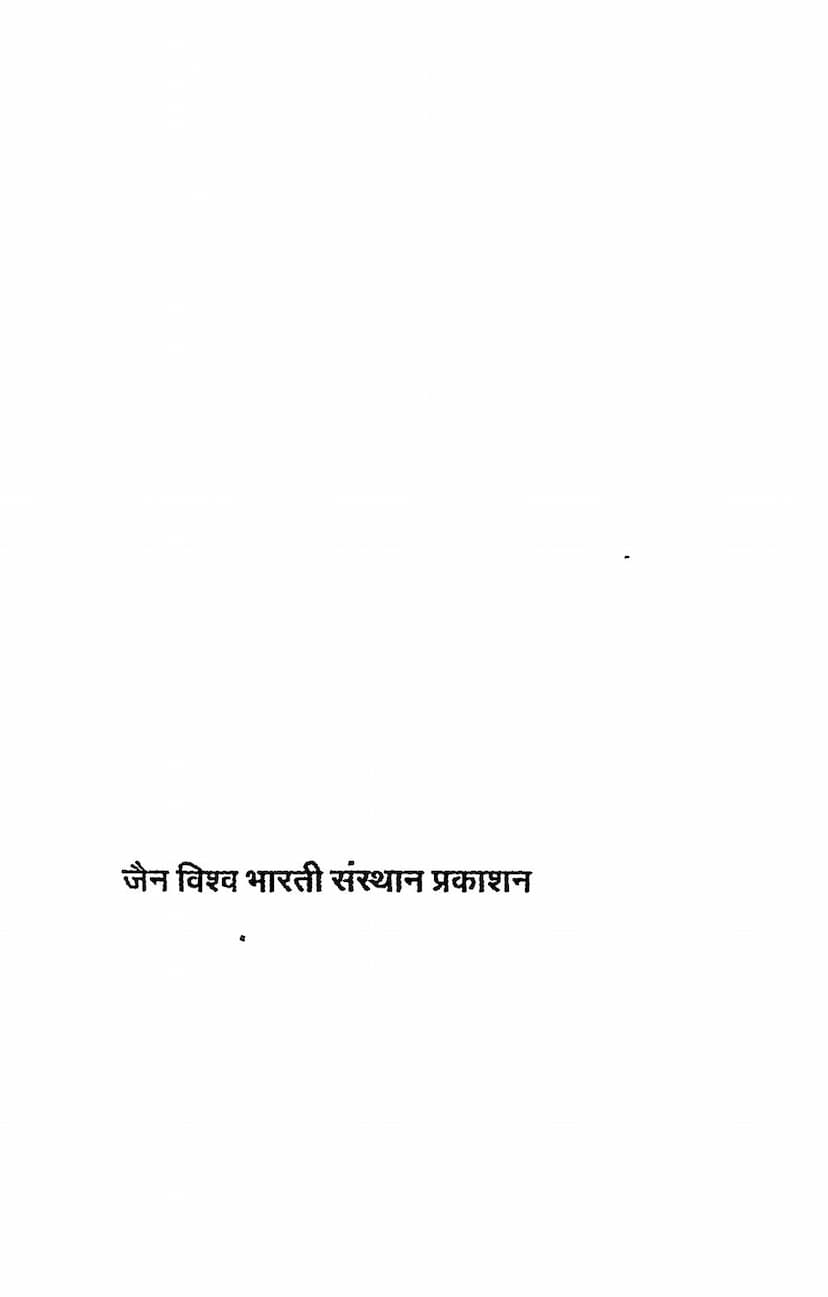Shraman Sukt
Added to library: September 2, 2025

Summary
This is a comprehensive summary of the Jain text "Shraman Sukt" by Shreechand Rampuriya, published by Jain Vishva Bharati Samsthan. The book is a compilation of teachings and guidelines for Jain ascetics (Shramans), primarily drawn from the Dasavaikalika and Uttaradhyayana Agamas.
Here's a breakdown of the content:
Introduction and Author's Purpose:
- The book is presented as a collection of profound and actionable teachings of Lord Mahavir, specifically for the contemplation and practice of Jain monks and nuns (Shramans).
- It aims to provide authentic insights into the conduct and lifestyle of ascetics.
- The editor, Shreechand Rampuriya, hopes the selection will be beneficial for ascetics' self-study and for those who wish to understand their way of life.
Core Themes and Content:
The "Shraman Sukt" is a collection of verses (Suktas) that detail the principles and practices of Jain ascetics. The content can be broadly categorized as follows:
-
The Ideal Shraman and Lord Mahavir's Life:
- The initial sections (Pages 4-6) provide a biographical sketch of Lord Mahavir, highlighting his rigorous penance, self-control, and endurance of hardships during his twelve years of spiritual practice.
- It emphasizes his detachment from the body and his unwavering equanimity in the face of suffering and adverse situations, which earned him the name "Mahavir" (Great Hero).
- The text describes his attainment of Kevala Jnana (omniscience) and his subsequent 30 years of preaching the path of righteousness (Riju Dharma).
- His teachings are summarized as a call to renounce the impure and embrace the pure, to desist from sin and practice restraint, and to protect the soul from misconduct.
-
Conduct and Discipline of Ascetics (Shramans): The bulk of the book consists of detailed guidelines for Shramans, covering various aspects of their daily life and spiritual practice. These include:
-
Principles of Asceticism:
- Detachment and Non-possession (Aparigraha): The concept of Shramans being like bees drawing nectar from flowers without harming them (Sukta 1-2), taking only what is necessary and without causing harm.
- Self-Control and Restraint (Sanyam): Emphasis on controlling the senses, mind, speech, and body. This is illustrated through verses about careful movement (Sukta 17-25, 28-31), speech (Sukta 65-68, 100-104), and overall conduct.
- Penance and Austerity (Tapas): The importance of undergoing penance for spiritual purification and liberation (Sukta 317-318).
- Righteous Conduct (Dharma): Adhering to the path of righteousness, truth, and non-violence (Ahimsa).
-
Daily Practices and Etiquette:
- Pindapata (Alms-seeking): Detailed instructions on how to collect alms, emphasizing mindfulness, purity of intention, and avoidance of causing harm to any living beings. This includes rules on what to accept and what to reject (Sukta 26-52, 70-78, 86-100, 174-175).
- Movement and Location (Eryapatha): Guidelines on walking with utmost care to avoid harming even the subtlest life forms (Sukta 28-31, 101-109, 204-207, 300-301, 313-315). This includes avoiding certain paths, places, and actions that might lead to violence.
- Speech and Communication (Vayani): Instructions on speaking truthfully, appropriately, and avoiding gossip, criticism, or disrespectful language (Sukta 65-68, 100-104, 111-114, 202-205, 302-303).
- Conduct with Gurus and Fellow Ascetics: Emphasis on respecting and serving one's teachers and fellow ascetics, displaying humility, and avoiding conflict (Sukta 115-146, 180-184, 266-272).
- Handling of Utensils and Belongings: Rules on the care and use of alms bowls, robes, and other minimal possessions, with a focus on non-attachment and purity (Sukta 47-49, 86-99, 117-119).
- Dietary Restrictions: Specific prohibitions against consuming certain foods or drinks that are considered impure, mixed with impure substances, or prepared in a way that involves violence (Sukta 45-53, 64-78, 103-104, 150-152, 167-171, 207-208, 330-336, 341-346).
- Avoiding Attachments and Sensual Pleasures: Strong emphasis on renouncing worldly desires, sensual pleasures, and attachments to the body, family, wealth, and status (Sukta 13, 16, 33, 42, 129, 151, 157-158, 161-163, 165, 169-170, 205, 218, 232-235, 238-240, 244-246, 320-321, 332-347).
- Patience and Forbearance (Titiksha): The importance of enduring hardships, insults, and pain with equanimity (Sukta 202-203, 210-211, 214-217, 324-325).
- Purity of Intention and Action: The need for sincerity, detachment, and purity in all actions.
-
-
The Path to Liberation (Moksha):
- The text consistently links the prescribed conduct and discipline to the ultimate goal of liberation from the cycle of birth and death.
- The attainment of omniscience (Keval Jnana) and the eventual state of Siddhahood (liberated souls) are presented as the outcome of following the Shraman path diligently (Sukta 28-32, 81-85).
- The book emphasizes that true renunciation and self-discipline are the means to eradicate karmic bondage and achieve ultimate freedom.
Structure and Style:
- The book is organized into numerous "Suktas" or verses, each containing a specific teaching or guideline.
- The verses are primarily in Prakrit (an ancient Indian language) with a Hindi translation provided for each.
- The verses are often attributed to specific Agamas (like Dasavaikalika, Uttaradhyayana).
- The editor's preface provides context and highlights the significance of Lord Mahavir's life and teachings.
Overall Message:
"Shraman Sukt" is a profound and practical guide for Jain ascetics, offering a detailed roadmap for living a life of renunciation, self-discipline, and spiritual pursuit. It underscores the rigorous ethical code and the inner transformation required to walk the path towards liberation, as exemplified by Lord Mahavir. The emphasis is on meticulous adherence to principles of non-violence, detachment, austerity, and purity in thought, word, and deed.